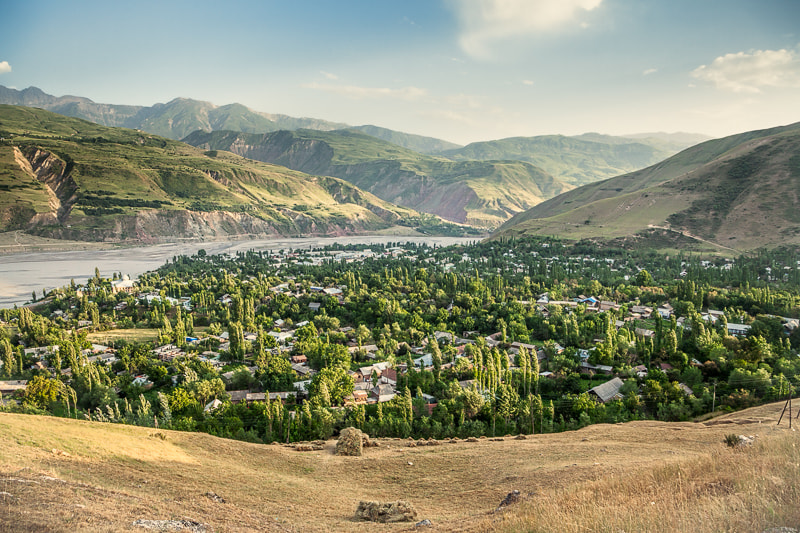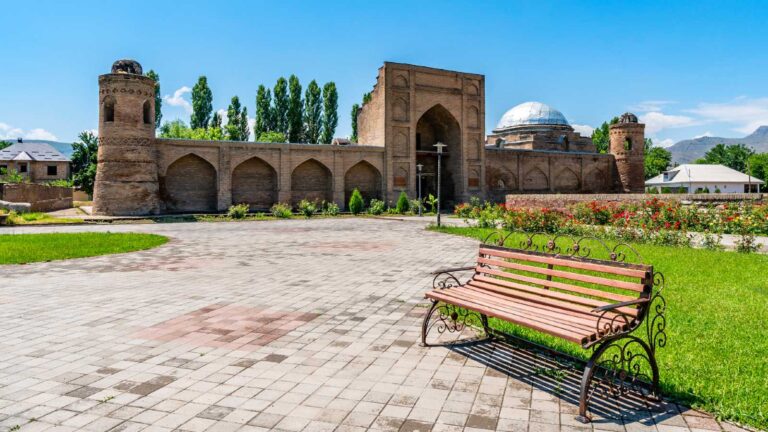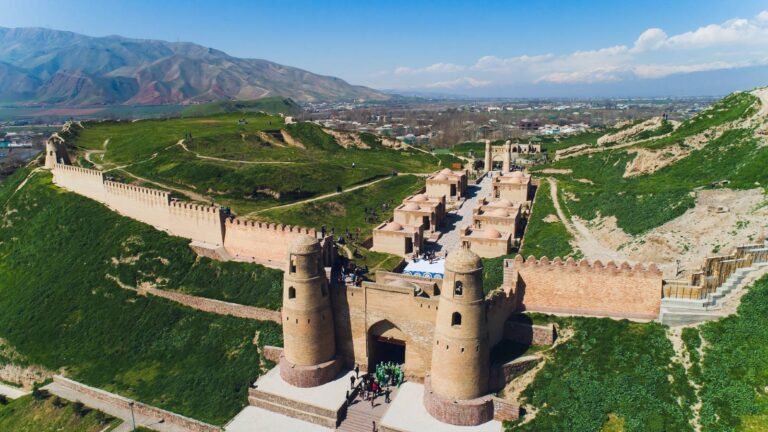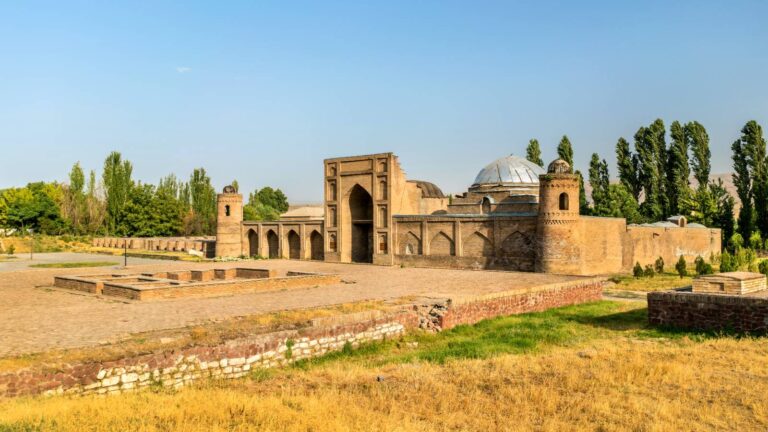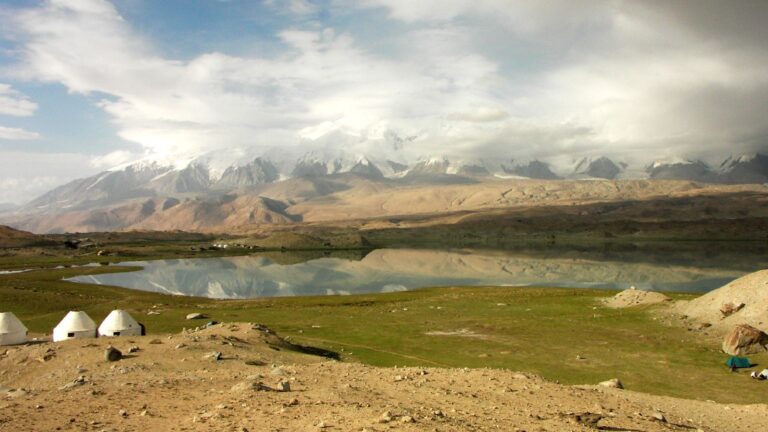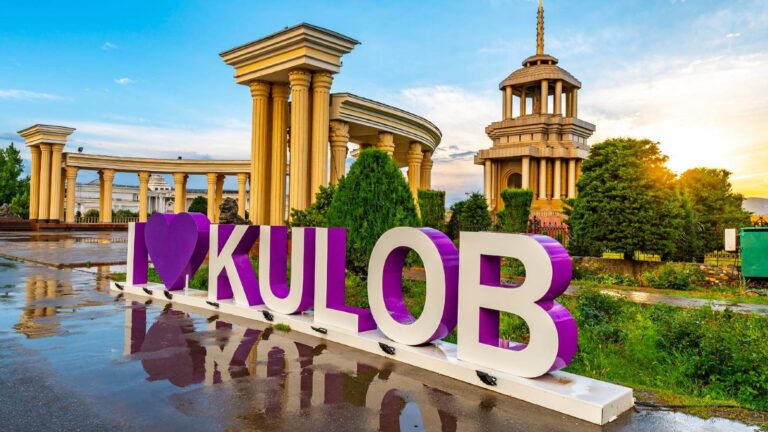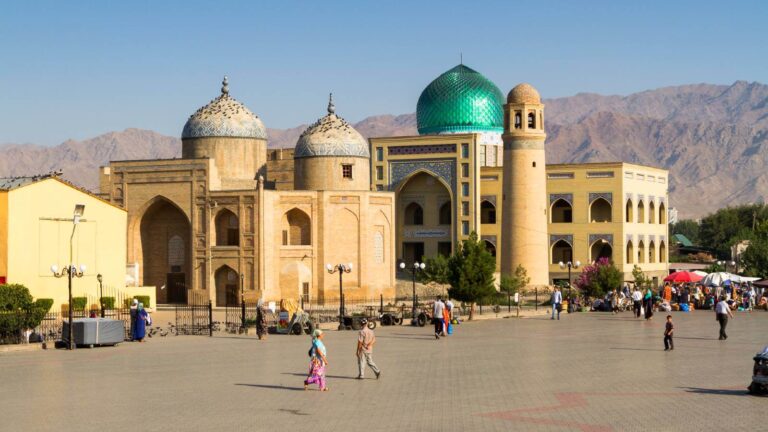Travel around the Districts under Republican Subordination is relatively easy, with good local transport, taxi and other options available. Many tourists choose to use a local guide – these are reasonably priced, and available through hotels and local travel companies.
The Districts under Republican Subordination have many historical, architectural and natural attractions. With their close proximity to Dushanbe it has become a popular region for tourists to explore, either through day trips, organised tours or as part of a wider visit to the region. Many of the country’s larger museums and cultural heritage sites are to be found here, and during the spring and autumn the climate makes the area conducive for exploring the wide range of flora and fauna in the region.
The territory covers much of the former Gharm region (1920-1955). Before this the region was called Karotegin or Karategin.
The history of the region goes back for millenia, and forms a vibrant part of the Silk Road frequented by warriors, travellers and traders, including Marco Polo, Tamerlane, Alexander the Great and Ghenghis Khan. Although little physical evidence of their time here remains, there are interesting collections in the National Museum that allude to their influence on the region. A number of archaeological sites are to be found in the area, and one of Tajikistan’s sites being considered for UNESCO World Heritage status, the Mausoleum of Hodja Nashron, is also found here.
More recent history is commemorated with a number of significant memorials to individuals and periods in recent Tajik history. Many of these are in Dushanbe but other towns have memorial gardens and parks and squares dedicated to historical figures from Tajik culture with sculptures, statues and fountains dedicated to them.
The majority of traditional festivals and celebrations in the region are centred around the seasons and family. They include traditional food, costumes and entertainment. March 8th is celebrated as Mothers Day and the period of 21st and 22nd of March is Navruz (New Year). This is one of the most important, and oldest, holidays in the Tajik calendar and all villages, towns and cities of the region will hold lavish celebrations and parties. During Navruz today, the Tajiks organise various games including wrestling (gushtingiri), horse-racing (poiga) and goat-carcass polo (buzkashi).
There are also celebrations for more recent events, including May 9th (Victory Day), June 27th (Day of National Unity and Concordance), September 9th (Independence Day), October 5th (National Language Day) and November 6th (Constitution Day).
The region covers an area of 28,500 square kilometres. The districts’ ethnic composition in 2010 was 85% Tajik and 11.7% Uzbek.
The region sits on a plateau that is traversed by the Vakhsh river. On the northern border run the Gissar and Zeravshan mountains, and on the southern border the Darvaz mountain range rises to 7,600m.
The winter climate is extremely severe in Lakhsh (previously known as Jirgatol) and Sangvor district
(previously known as Tavildara).
Snow begins to fall in October and it is May before it disappears. During the warmer months, however, the mountainsides are richly clothed with the foliage of maple, mountain ash, apple, pear and walnut trees; the orchards furnish not only apples and pears, but peaches, cherries, mulberries and apricots. Both cattle and horses are of a small and hardy breed and survive here.
The economy of the region relies on a mixture of tourism, agriculture and some mining activities – notably for fluorite and semi precious minerals. Much of the economic generation takes place in the cities, including Dushanbe, which a number of people ‘commute’ to daily.
Agriculture is semi intense with the amount of productive land confined to the river plains and the more open areas of the plateau region. In the summer pastures on the southern and northern mountains are utilised by horse, cattle and sheep farmers.

